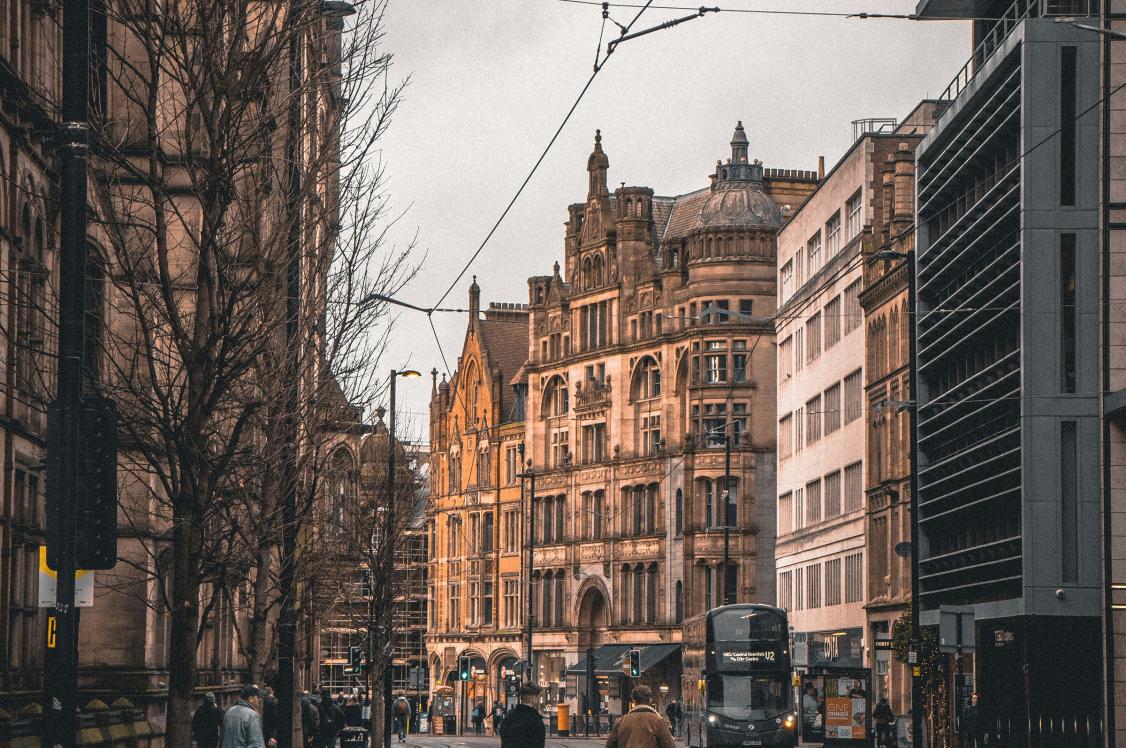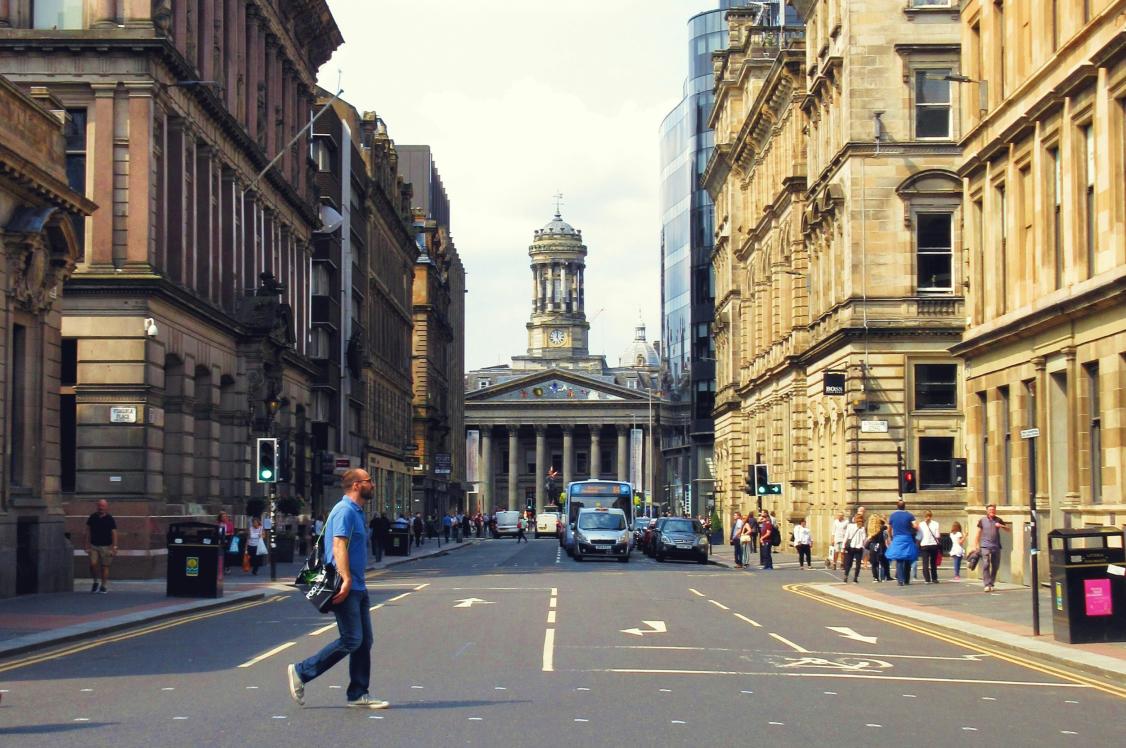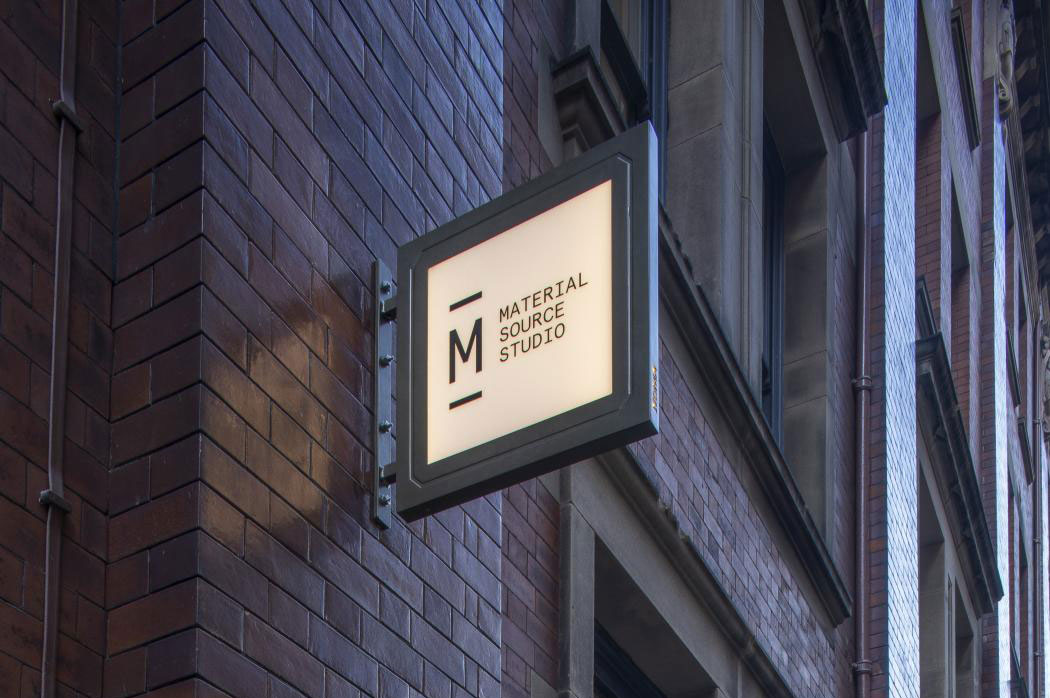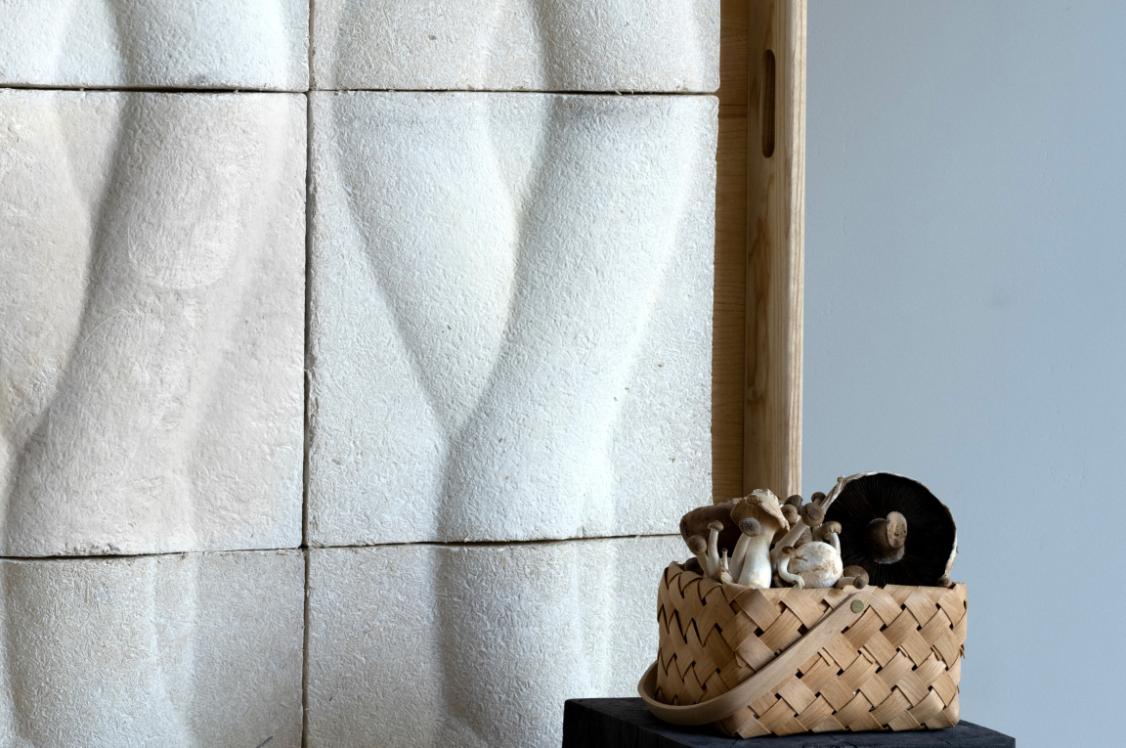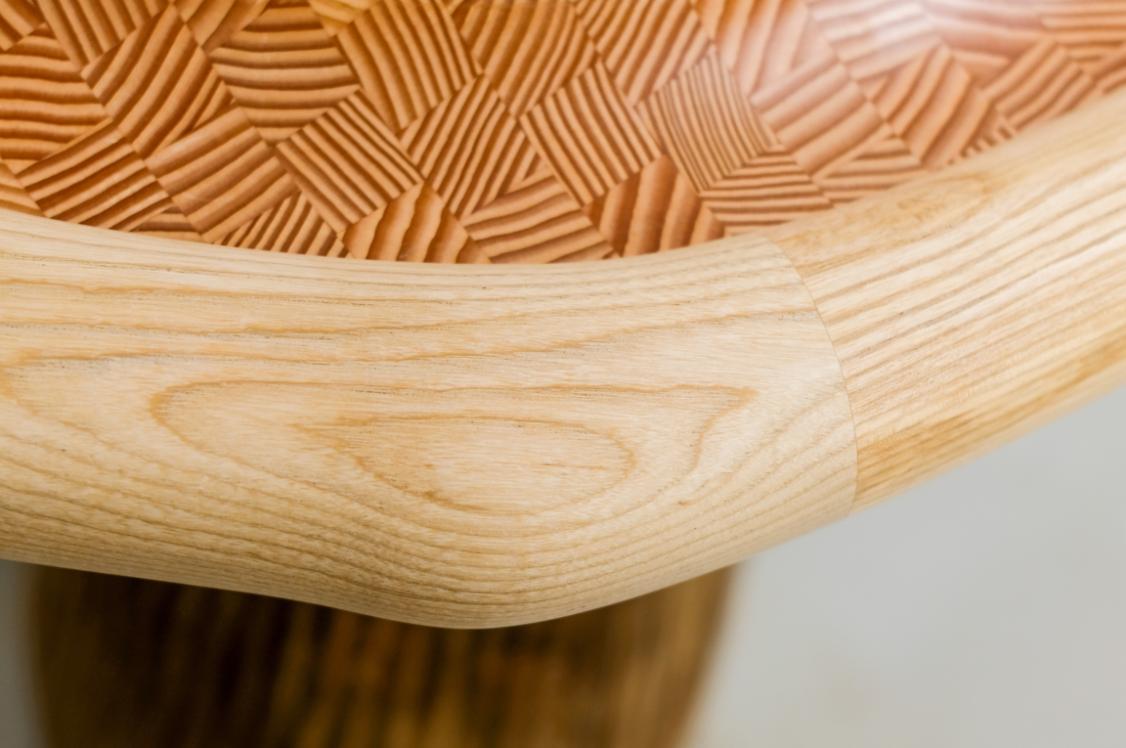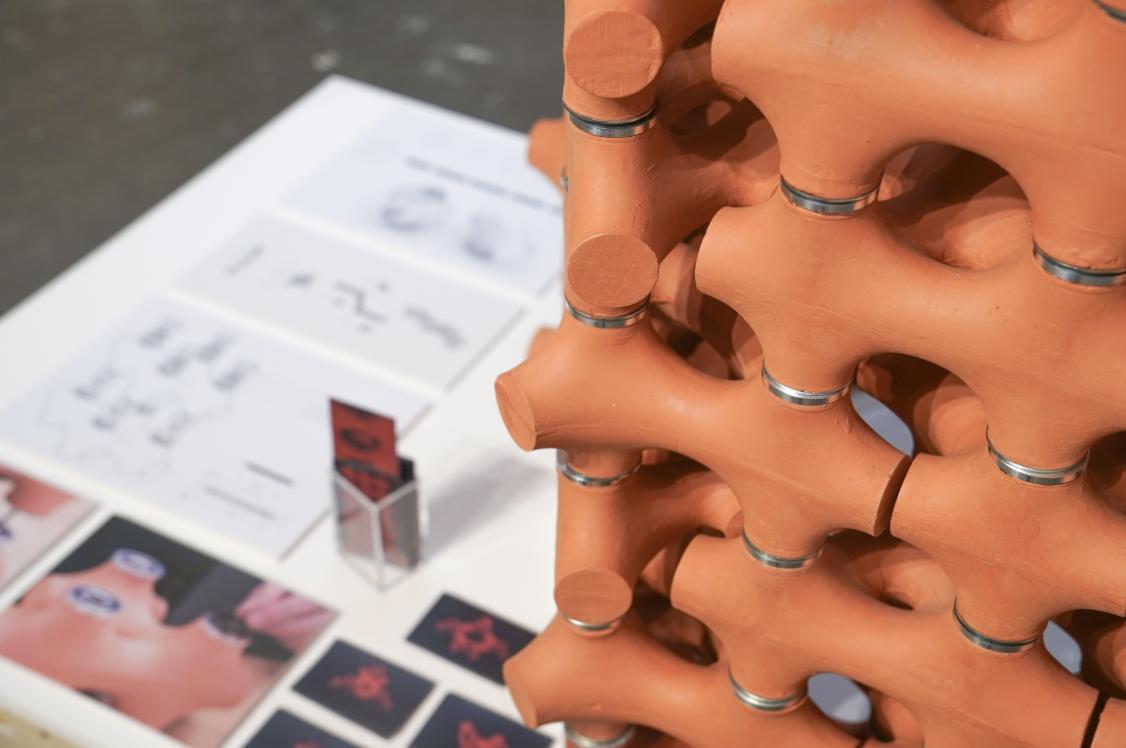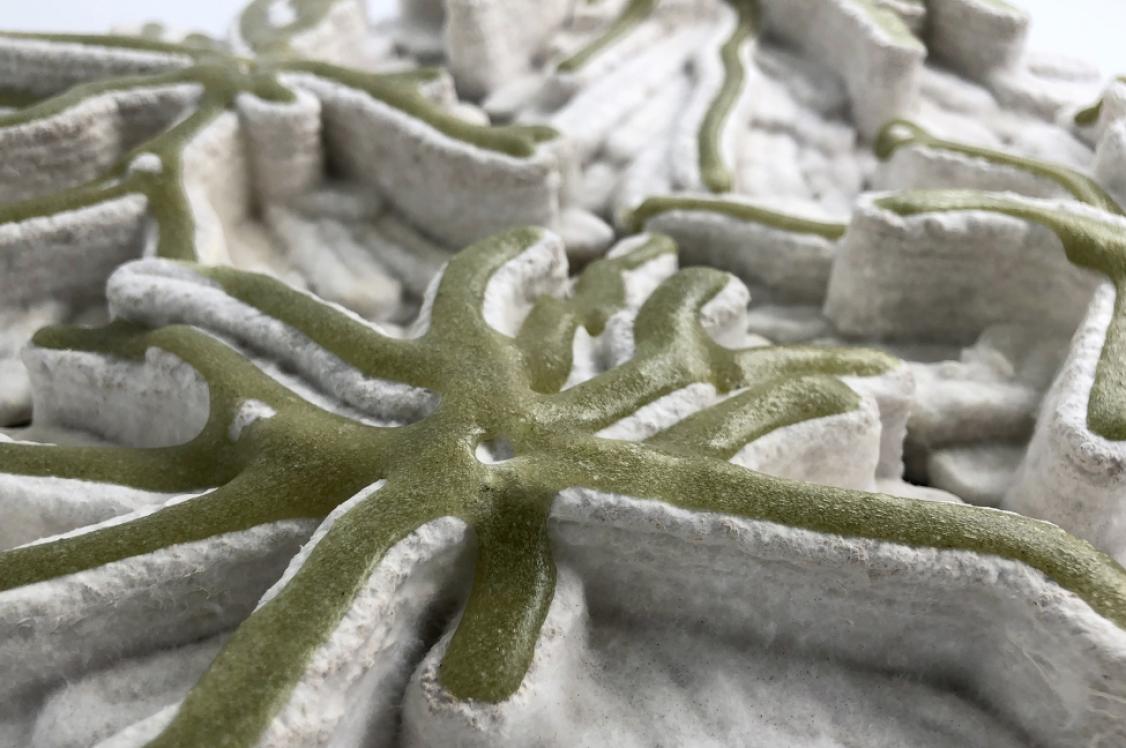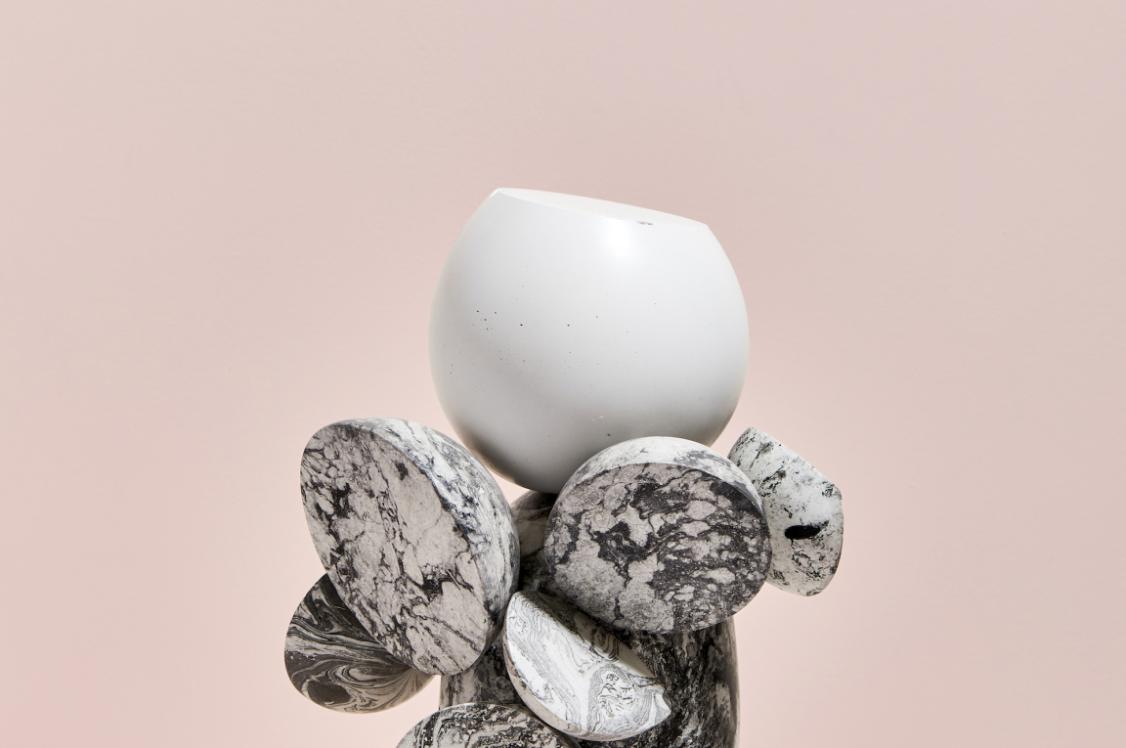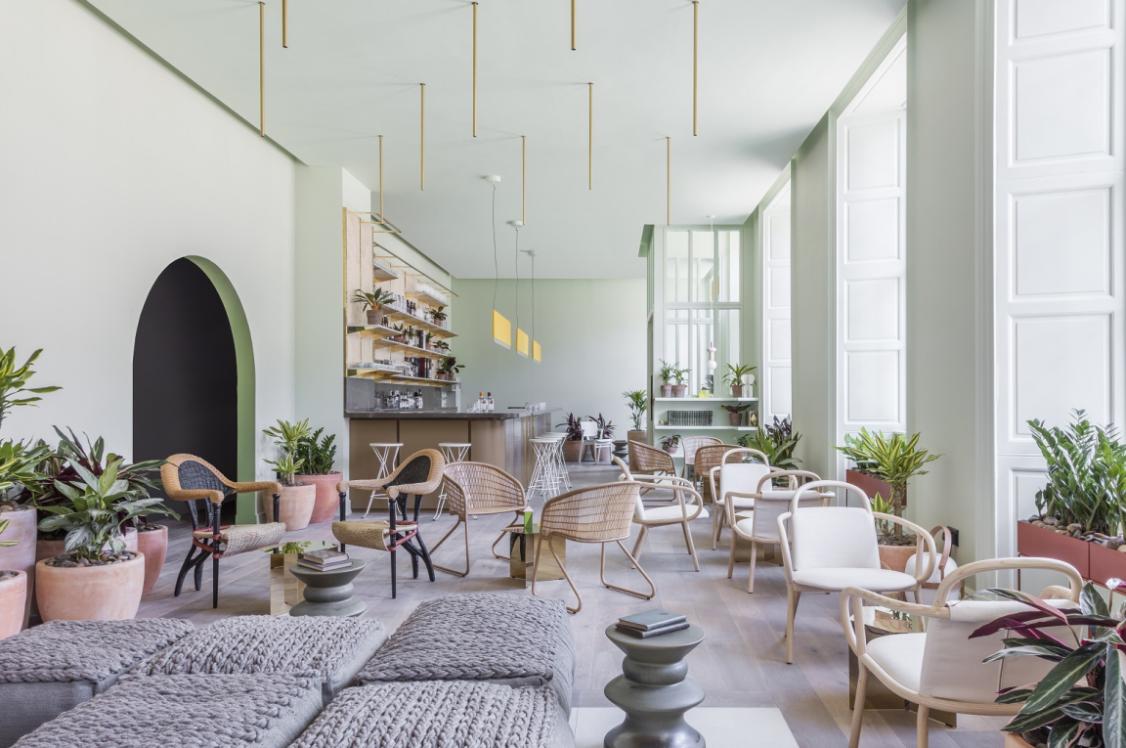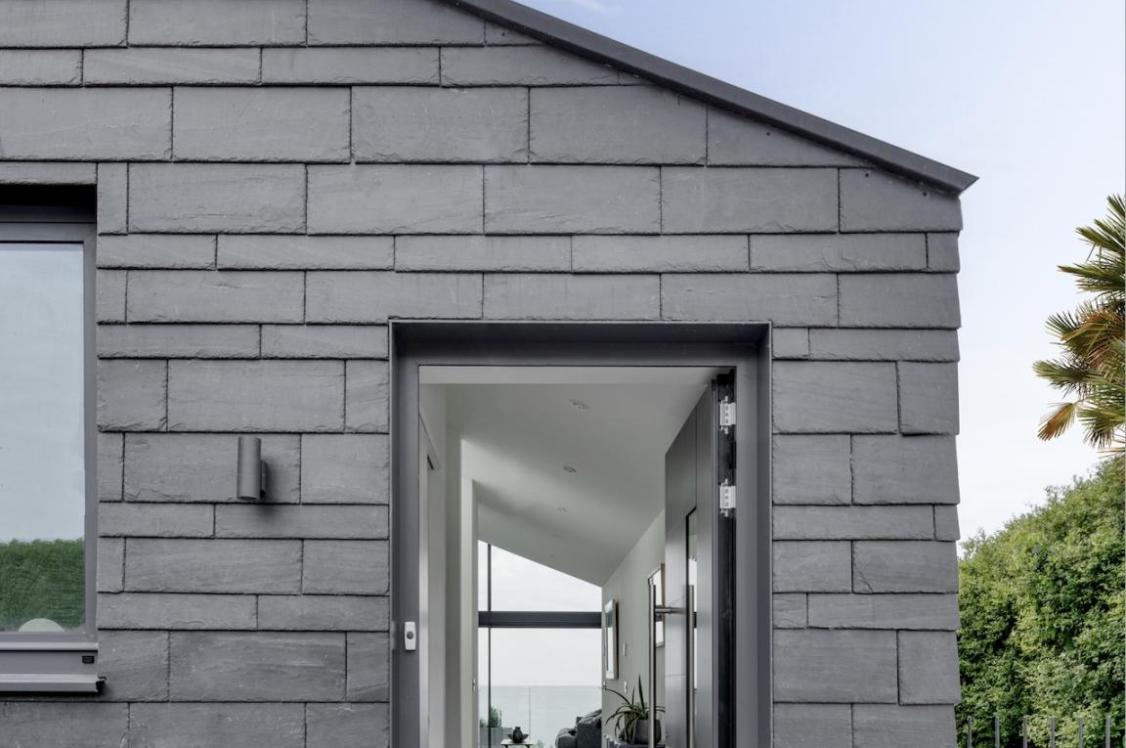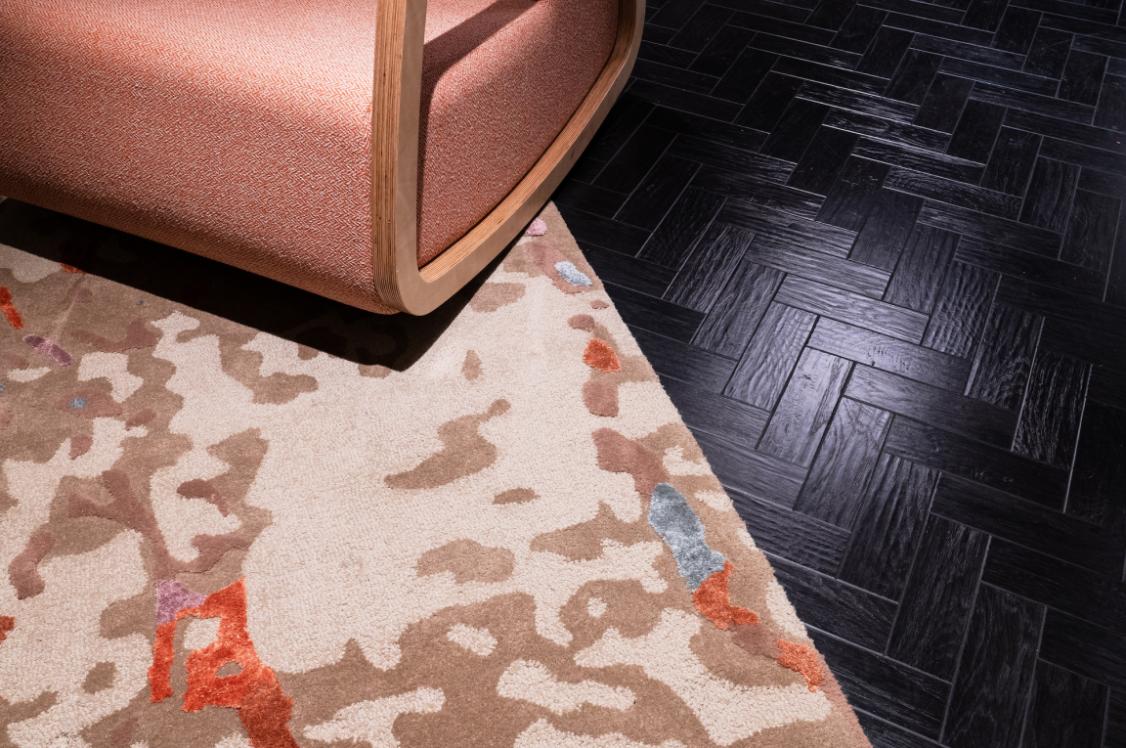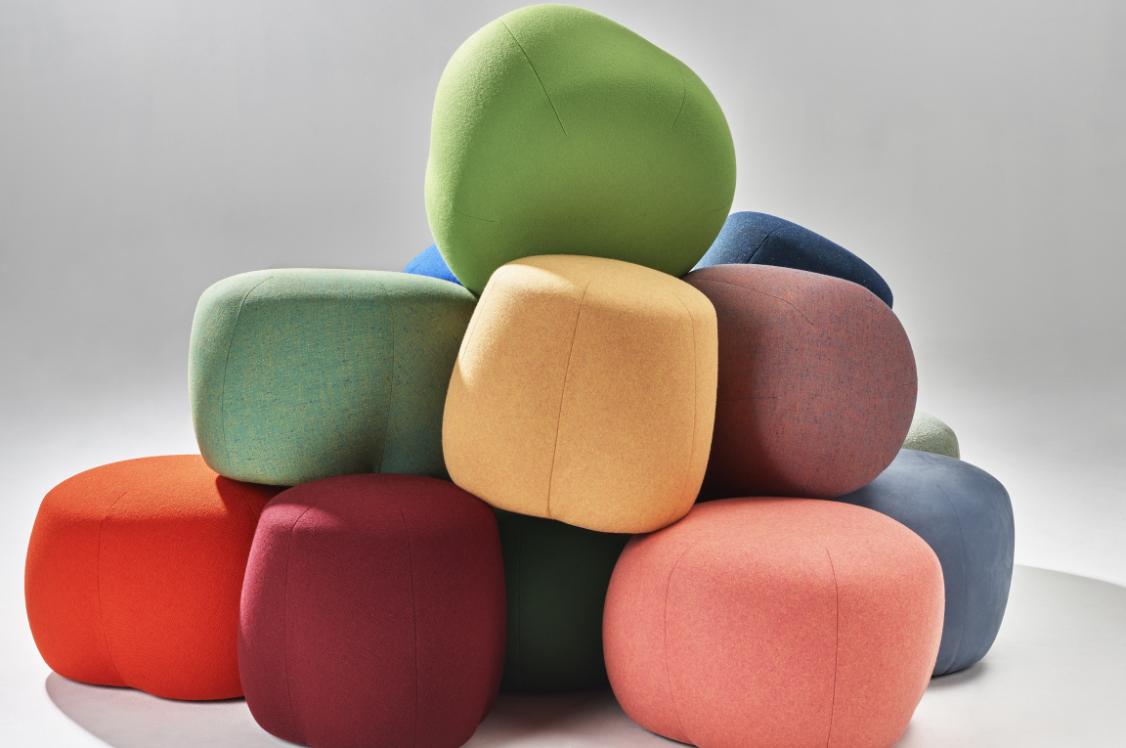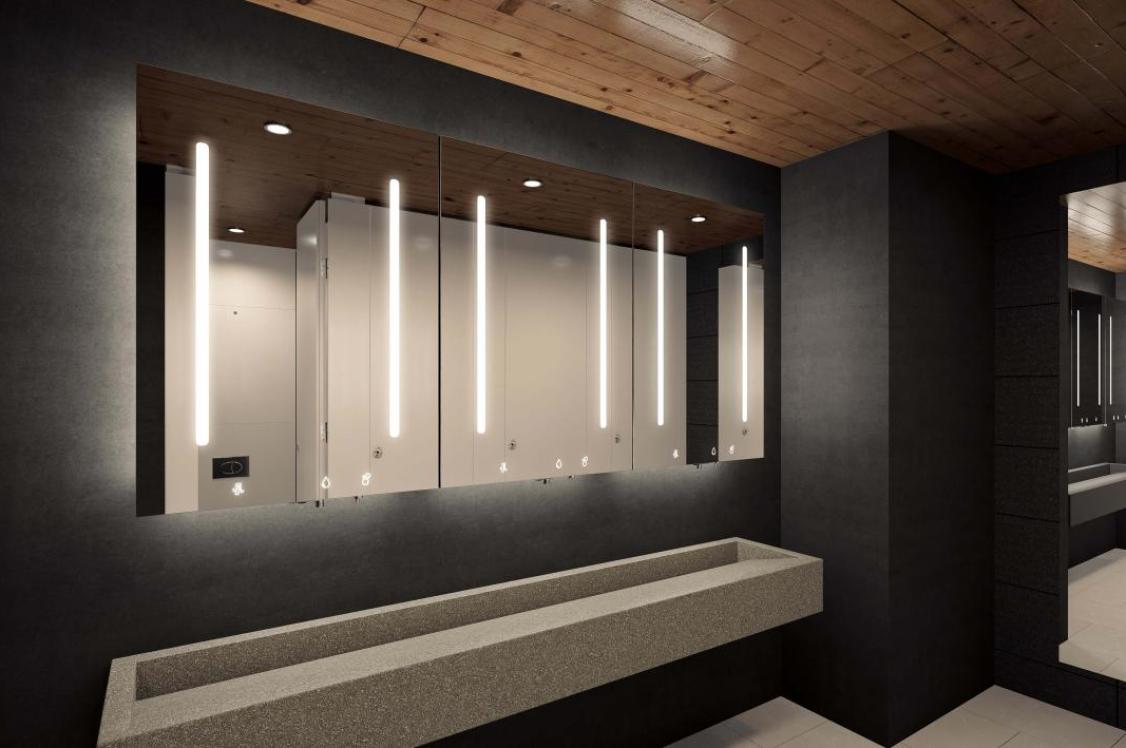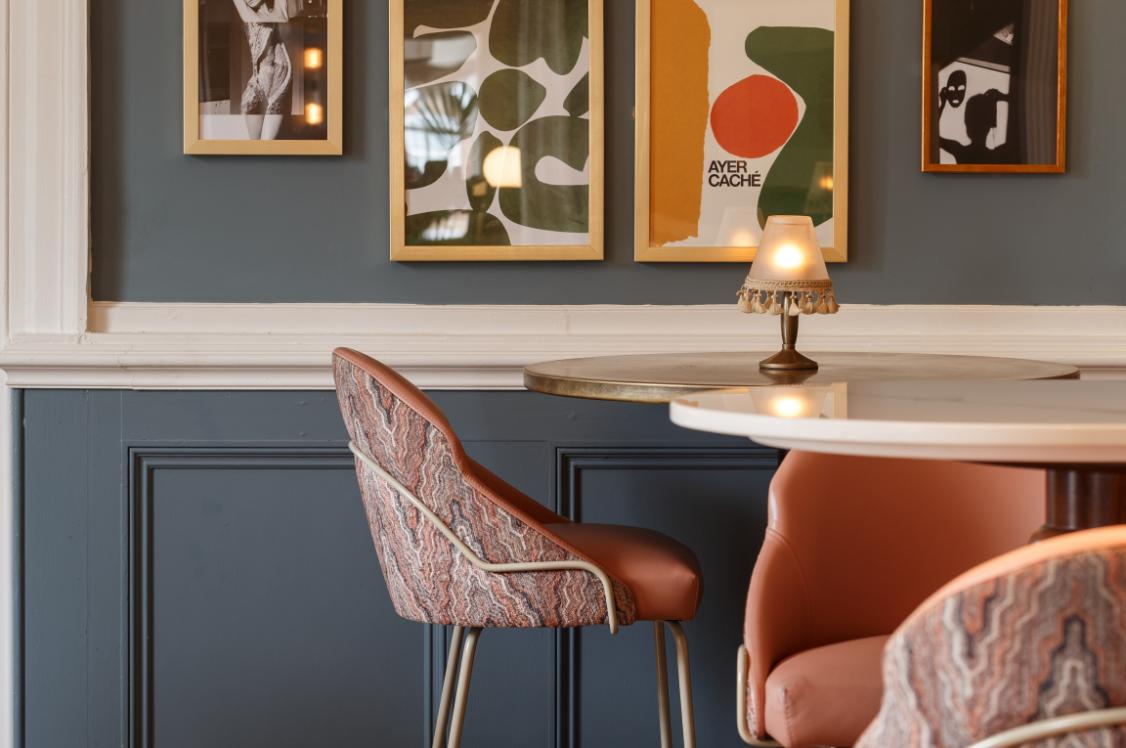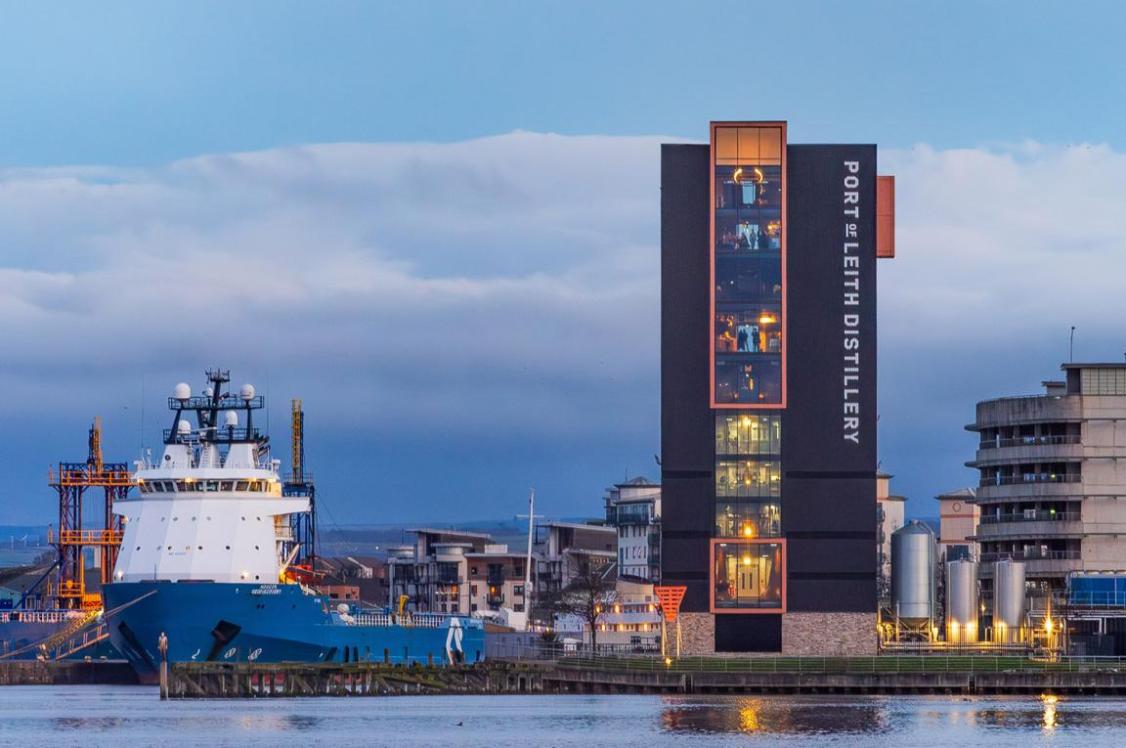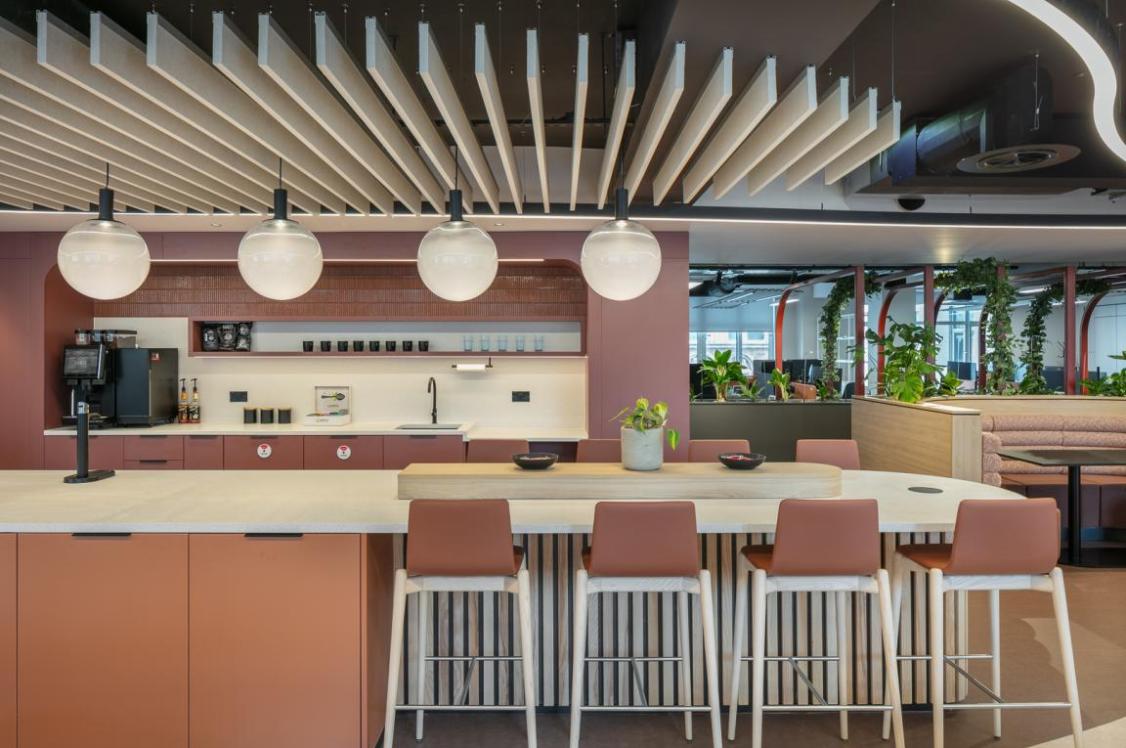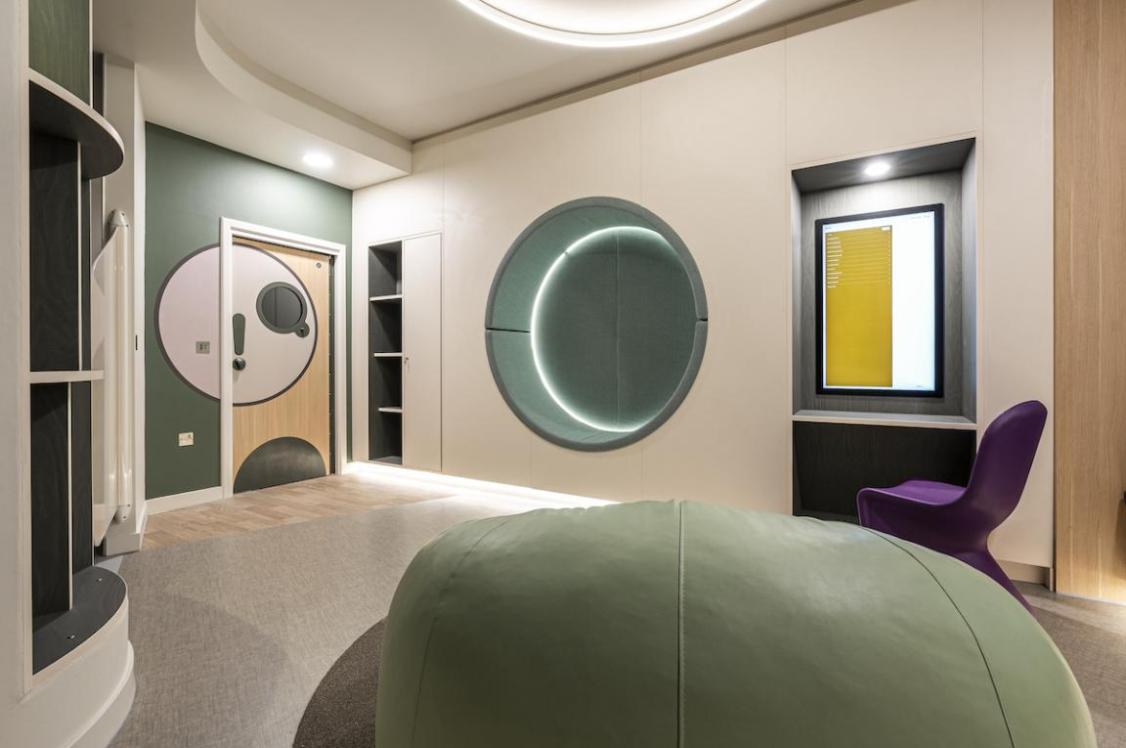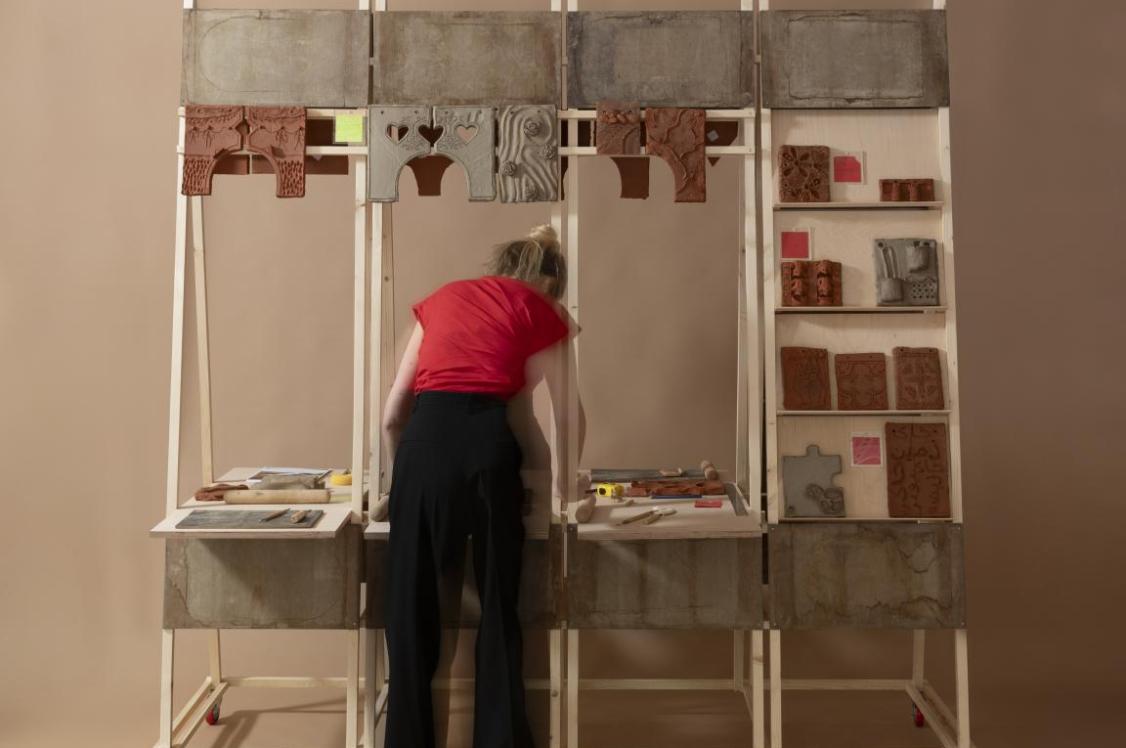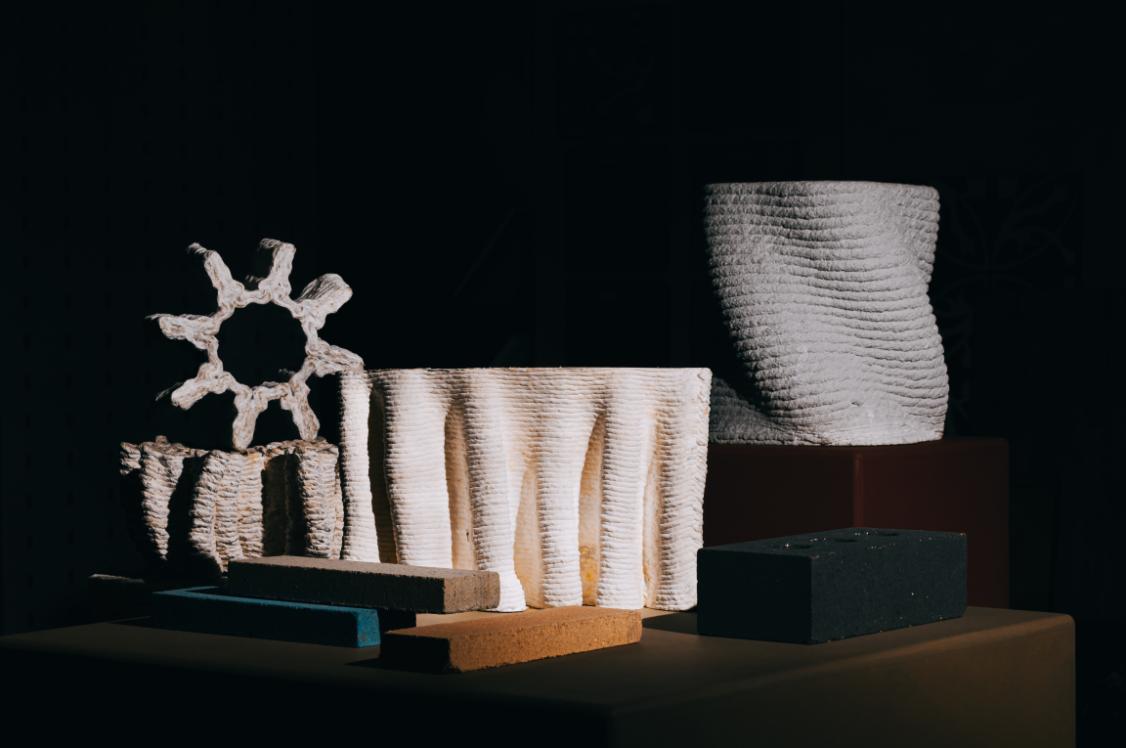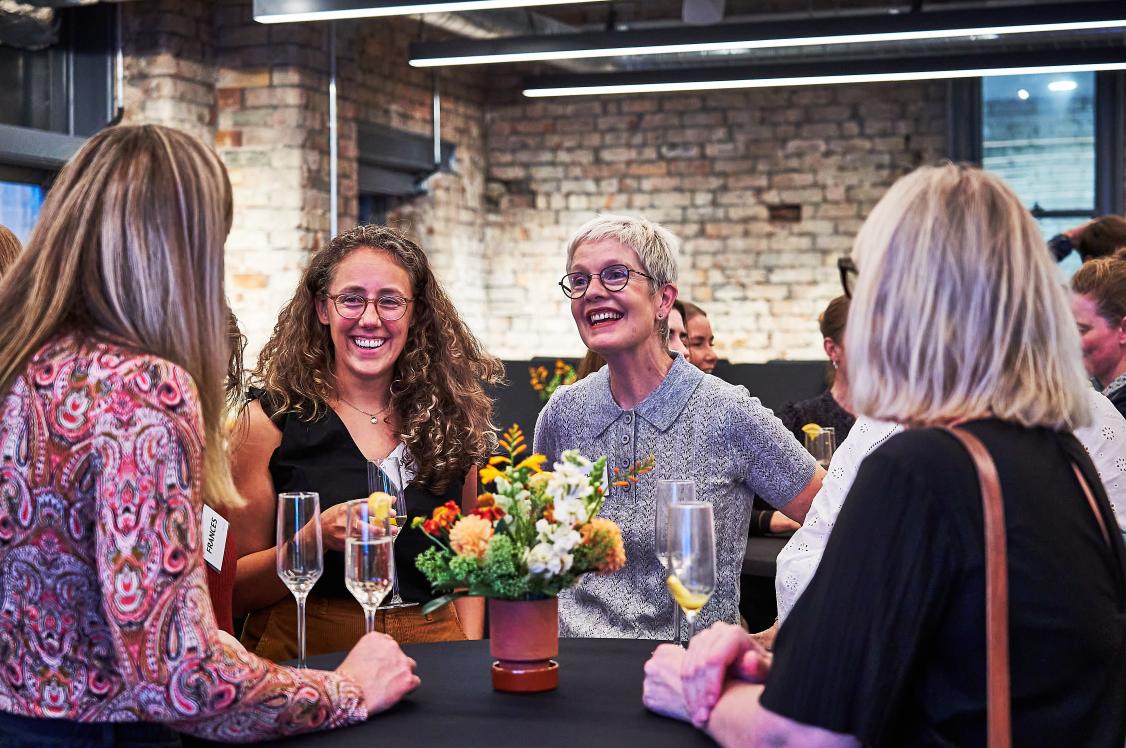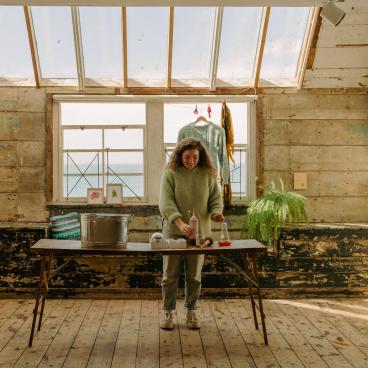From Landmark to Living Campus: JS+P reimagines campus totems at Exchange Quay.

Credit: Gunner Gu
For several decades now, Exchange Quay has been a bold presence in Manchester’s workplace landscape.
Its mirrored façades reflect both the city’s changing skyline and the dynamic businesses housed within its total of 472,000 sq ft of Grade A office space, contained within seven striking, medium-rise towers.
A defining feature of the campus has always been its huge-scale wayfinding totems. Once a uniform, monochromatic orange, taken from the campus’s feature brand colours, the striking totems have now been transformed in the course of a new environmental branding scheme by Jasper Sanders + Partners to form a vibrant, contemporary and ever-changing experience of colour, angles and light, mirroring the campus’s fluid interchange of people, work and ideas.
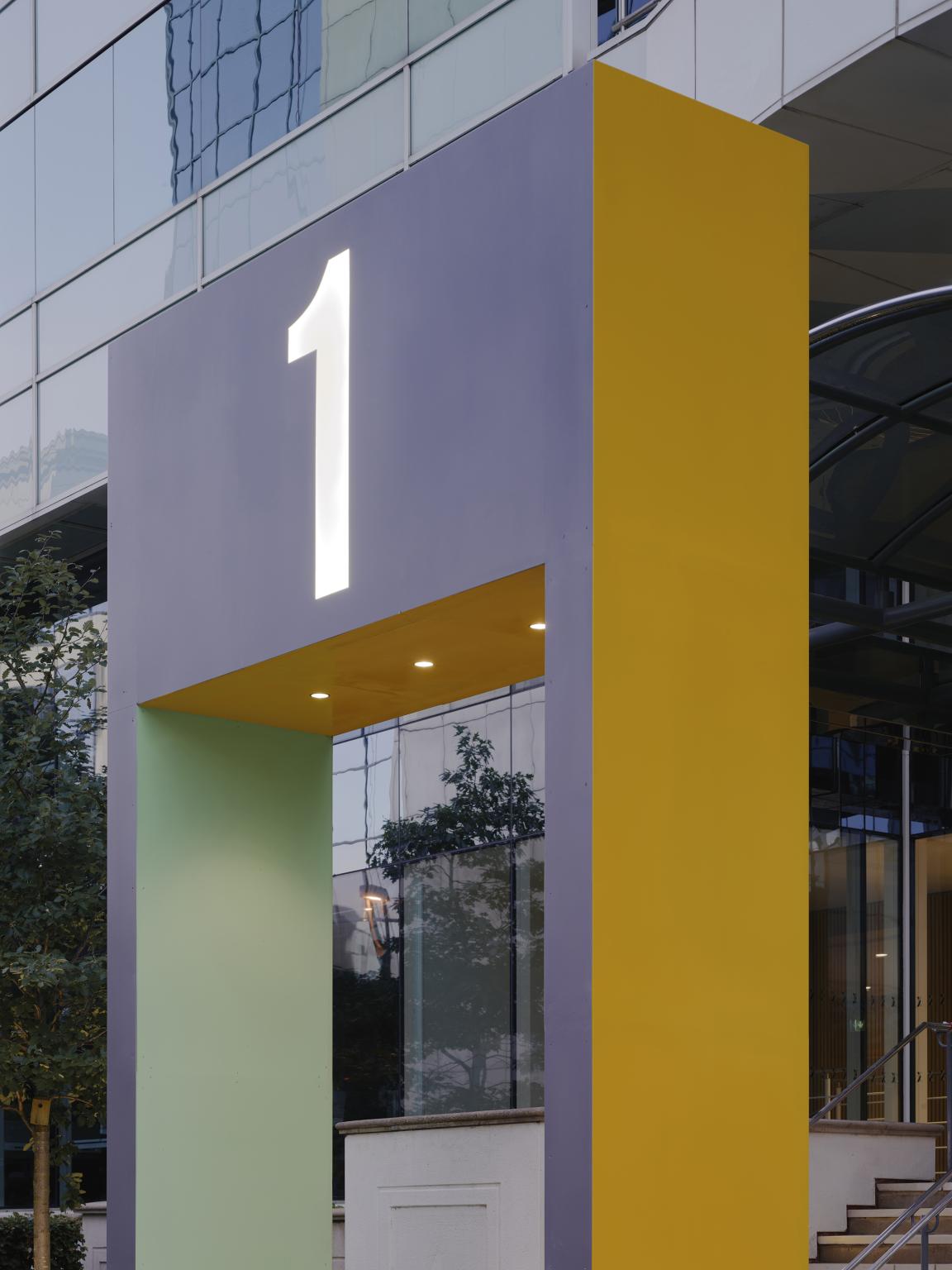
Credit: Gunner Gu
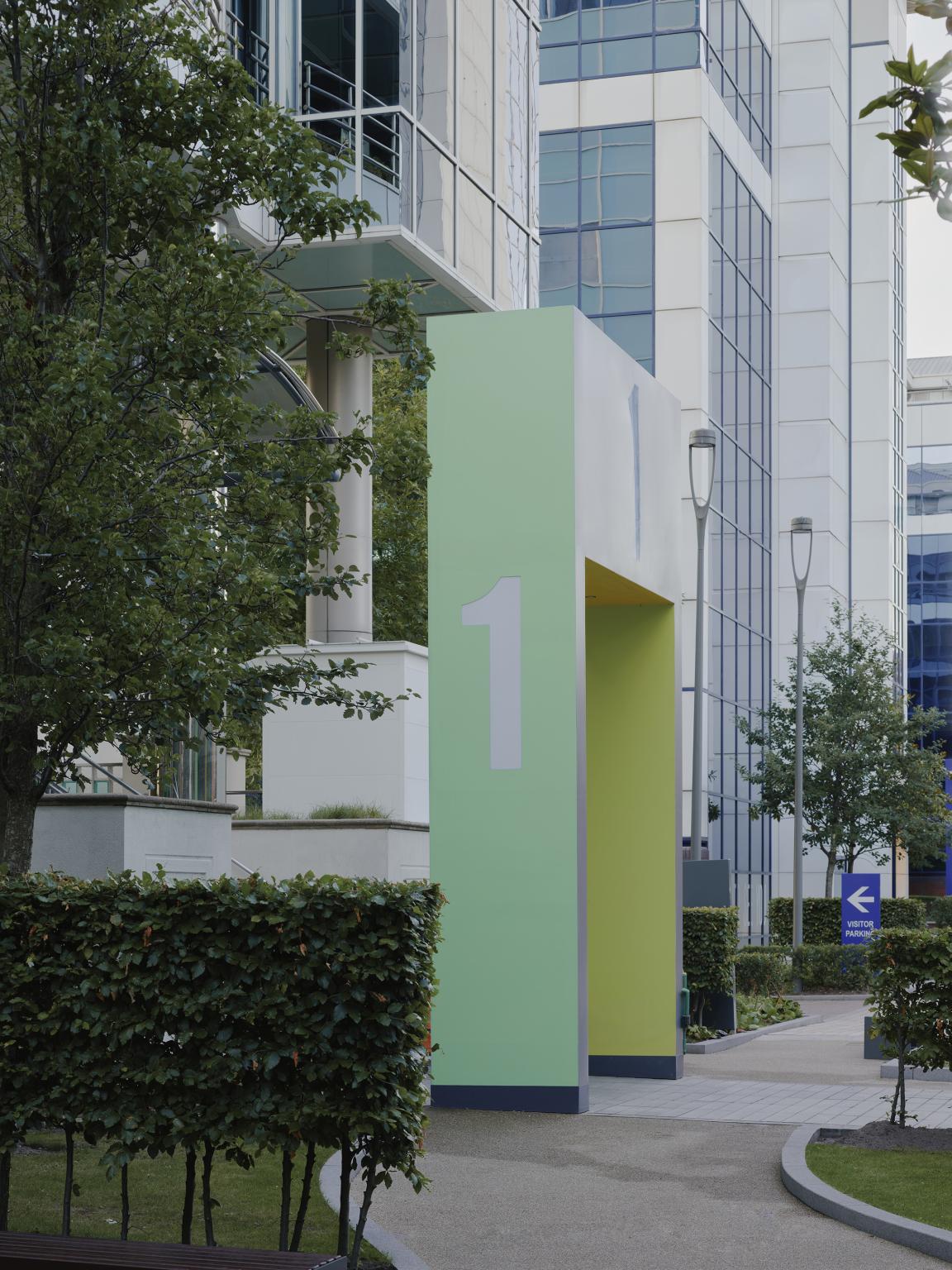
Credit: Gunner Gu
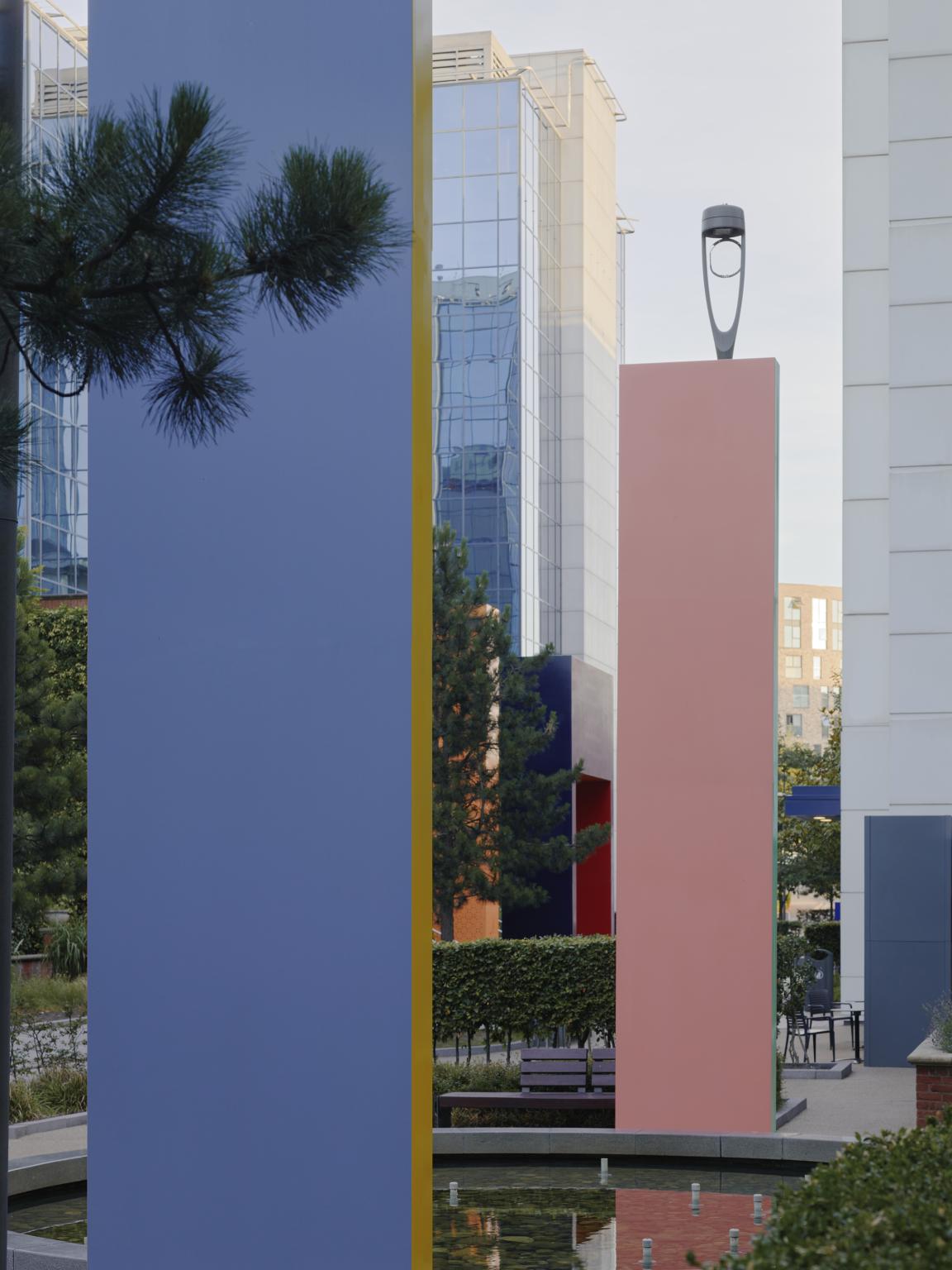
Credit: Gunner Gu
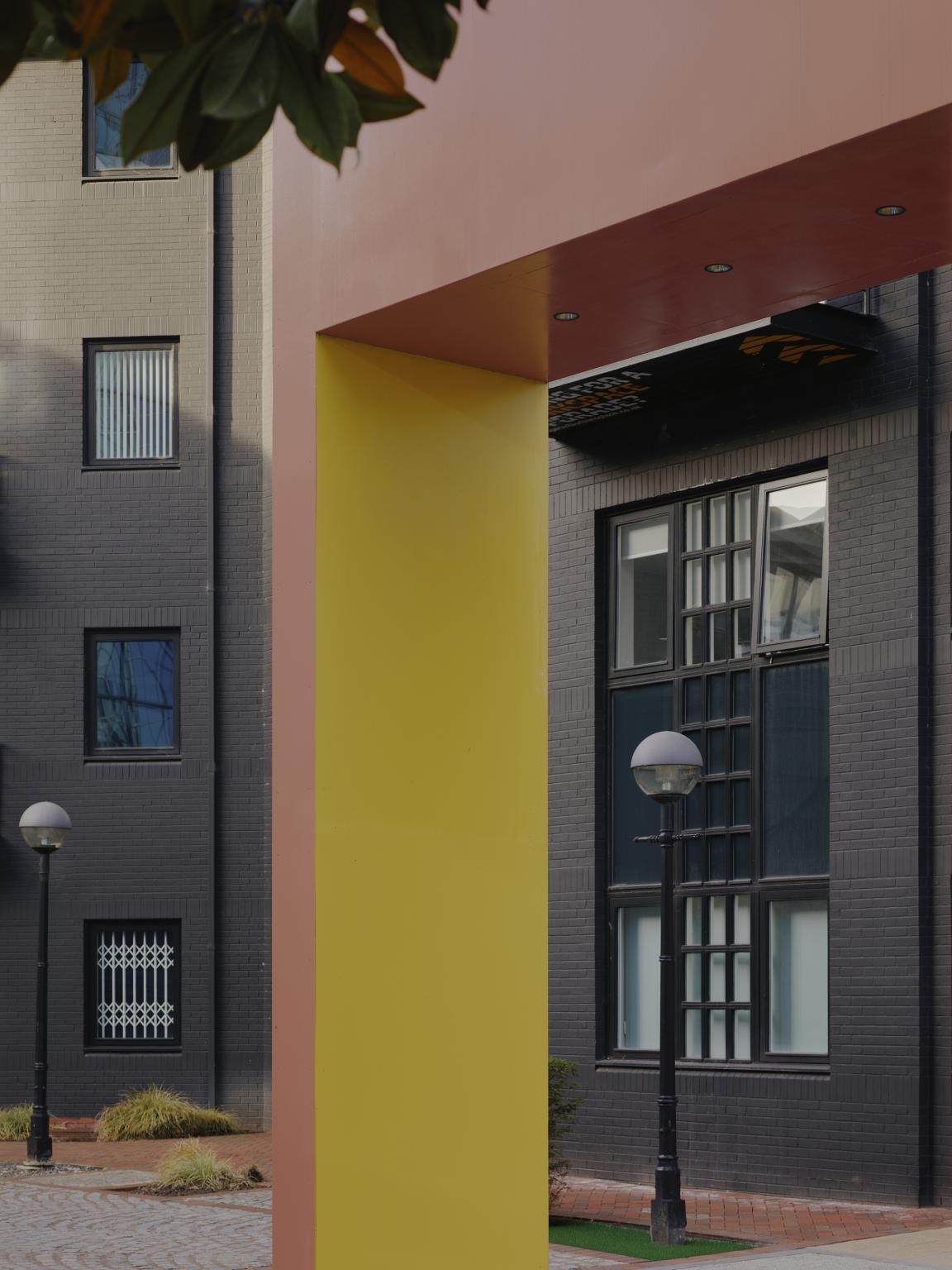
Credit: Gunner Gu
Shaping Place Through Form and Colour
"This new, place-making evolution reimagines the campus’s garden setting through a sophisticated and thoughtful approach to colour and composition", Jasper Sanders, founder of Jasper Sanders + Partners commented. "Working alongside our client, Till Asset Management, we sought to link the interiors of the seven landmark buildings directly to the landscaped gardens between them, fostering a dynamic and connected sense of place."
The reimagining is more than a visual update. It redefines how the space is experienced, encompassing movement, engagement, and, through a delicate balance of colour, light and form, by creating subtle cues that shape perceptions and a sense of place.
"The totems show a different face to onlookers wherever you are on the campus", Jasper added, "transforming them from functional wayfinding totems into attractive sculptural forms within the landscape, offering those who work or visit Exchange Quay a series of unfolding experiences."

Credit: Gunner Gu
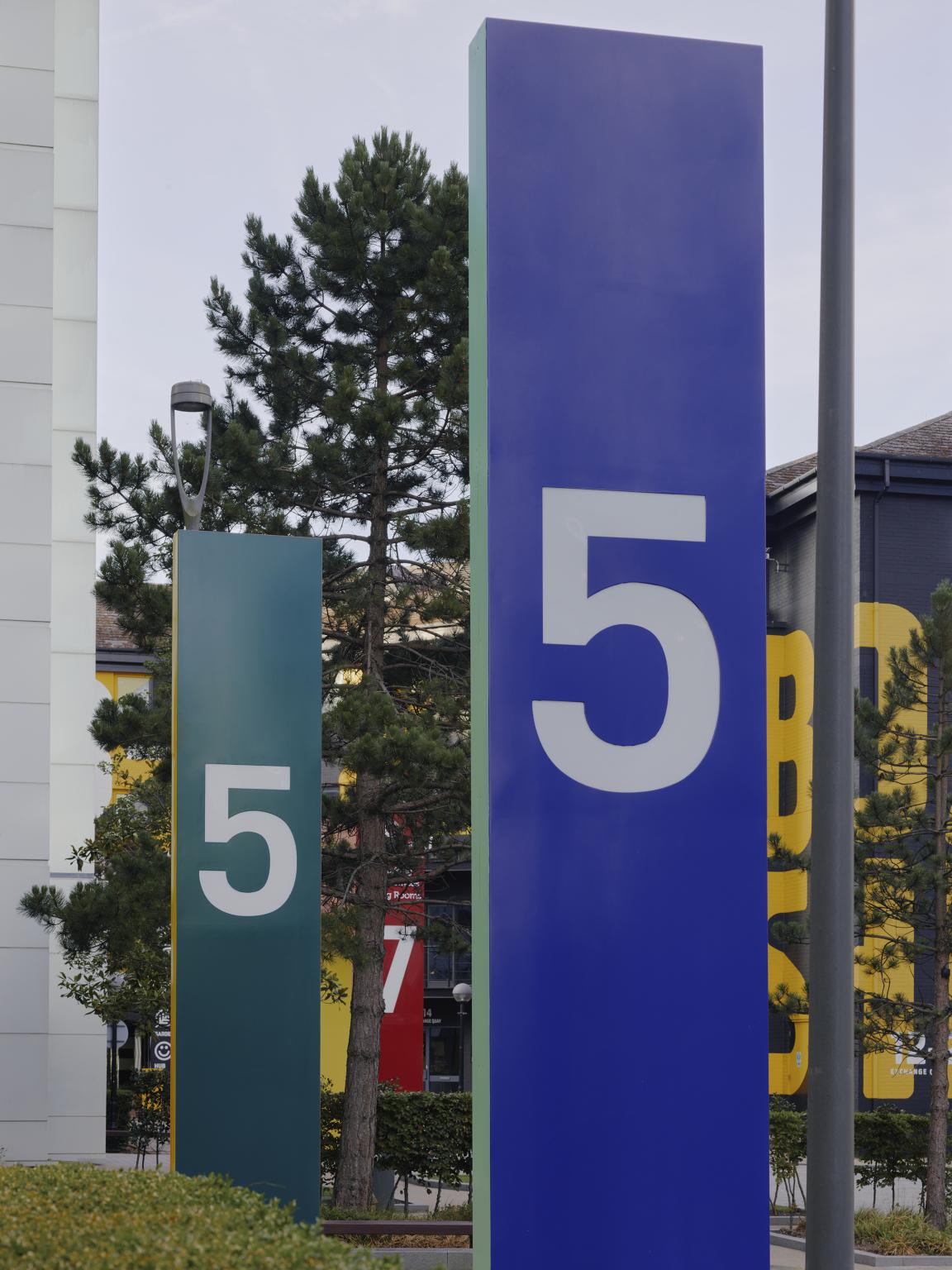
Credit: Gunner Gu
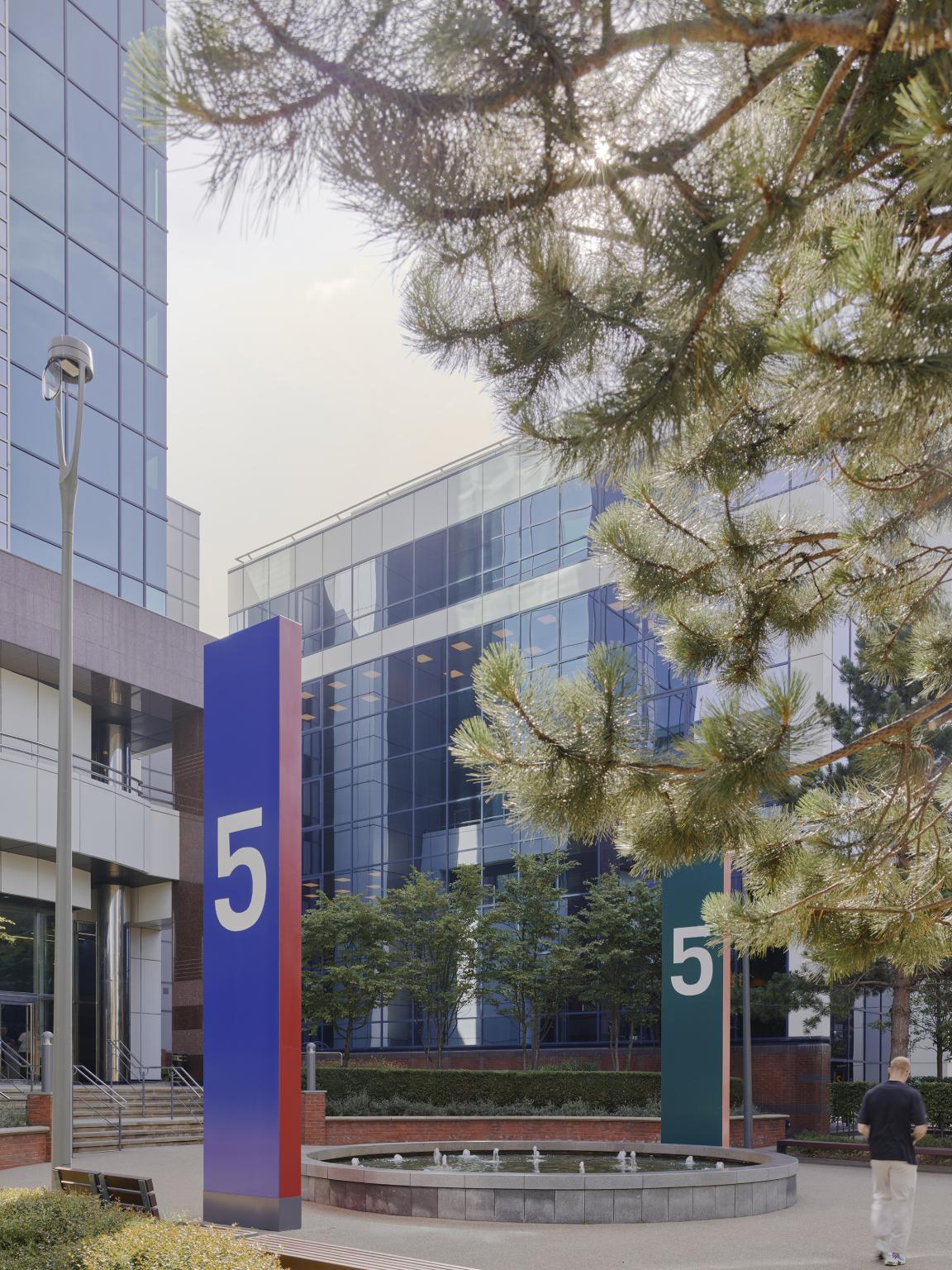
Credit: Gunner Gu

Credit: Gunner Gu
A Journey Through Tone and Perspective
Each steel totem features a spectrum of interconnected colours, with different hues and tonalities on every face. The colours, selected following detailed colour studies, are in a broad spectrum of tertiary tones, ranging from intense acid yellow to desaturated terracotta and deep cobalt blue. The interior of each building already had its own existing and identifiable colour palette, including strong reds and blues, which were related in some instances to its primary tenant. This meant a muted overall palette wasn’t going to work.
Lead designer on the project, Nathalie Kenning, approached her colour study in the form of a branding exercise, in order to create an identity for each totem that related to its tenants and their branding, whilst using daring contrasting and complementary colour palettes inspired by sculpture and the surrounding landscaping and which also worked with the existing architecture.
"Each totem is context-specific and relates directly to the building it announces", Nathalie explained, "reflecting its internal character, while also maintaining a collective identity with the other totems across the campus. Like the individuals who work within Exchange Quay, each one is distinct yet connected, reinforcing the idea of collaboration within a greater whole."
The experience of the totems shifts as people move through the campus. Colours emerge and recede, blending in and out of view depending on the angle of view, along with the time of day, direction of light and speed of movement, making for a surprising but harmonious interaction. A former static gesture has become a subtle and playful experience rooted in the present moment. "The new treatment encourages a slower, more reflective engagement with the Exchange Quay surroundings", Nathalie added, "and, whether seen from the ground, glimpsed from the office spaces above, or passed through at pace, they succeed in holding the viewer’s attention and remaining engaging over a longer period of time."

Credit: Gunner Gu

Credit: Gunner Gu
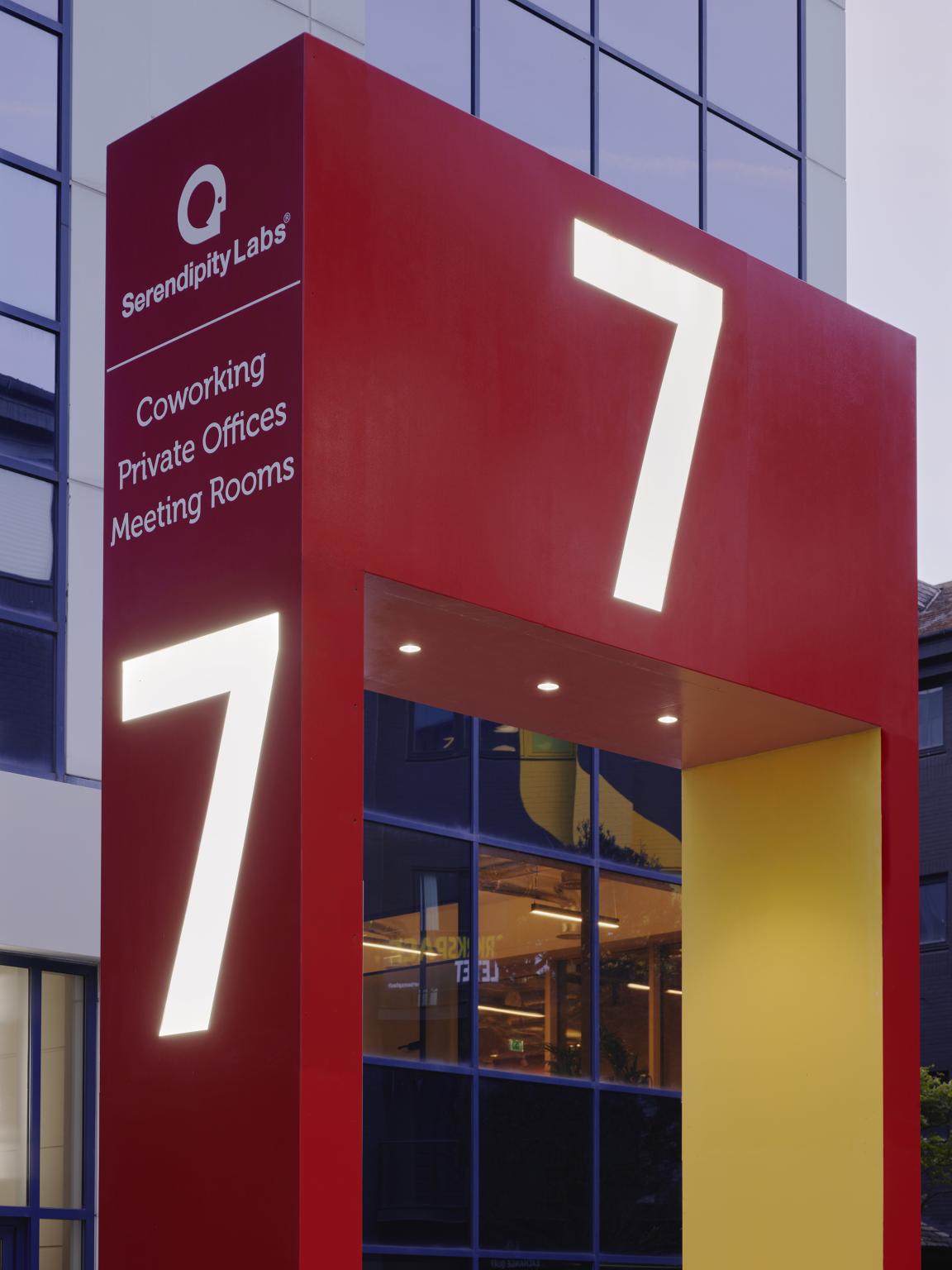
Credit: Gunner Gu

Credit: Gunner Gu
A Place to Work, Connect, and Reflect
Beyond the wayfinding remit, the redesign of the external architecture also extended to the external podium level, where a series of four former smoking shelters have been repurposed as outdoor meeting and social spaces. Positioned near the café kitchen, post office and alongside a lower-level coffee shop, these redesigned shelters, now in a mix of hunter and forest greens, offer a work-or-relaxation retreat, reinforcing Exchange Quay’s identity as a locus for both business and community.
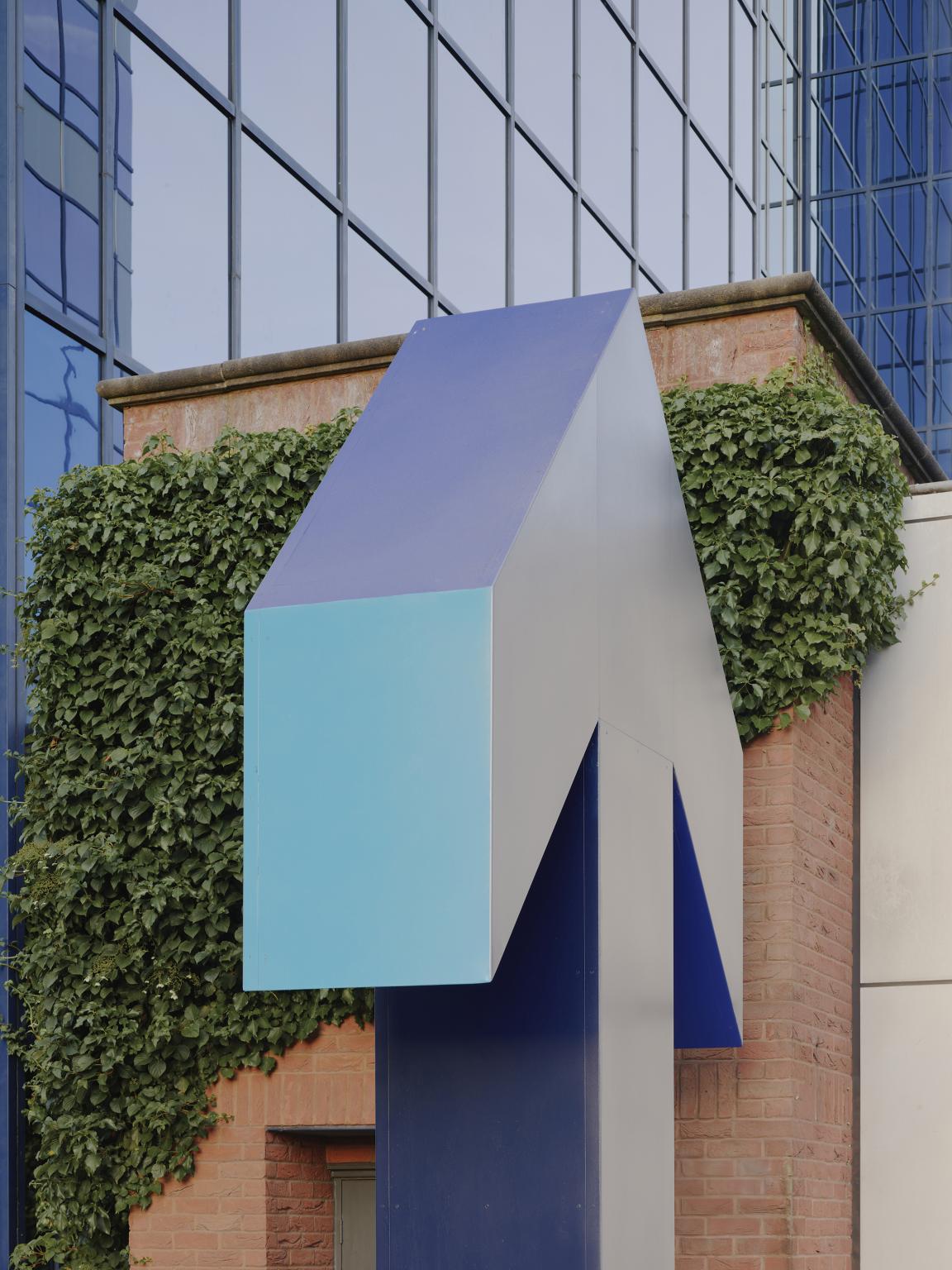
Credit: Gunner Gu

Credit: Gunner Gu
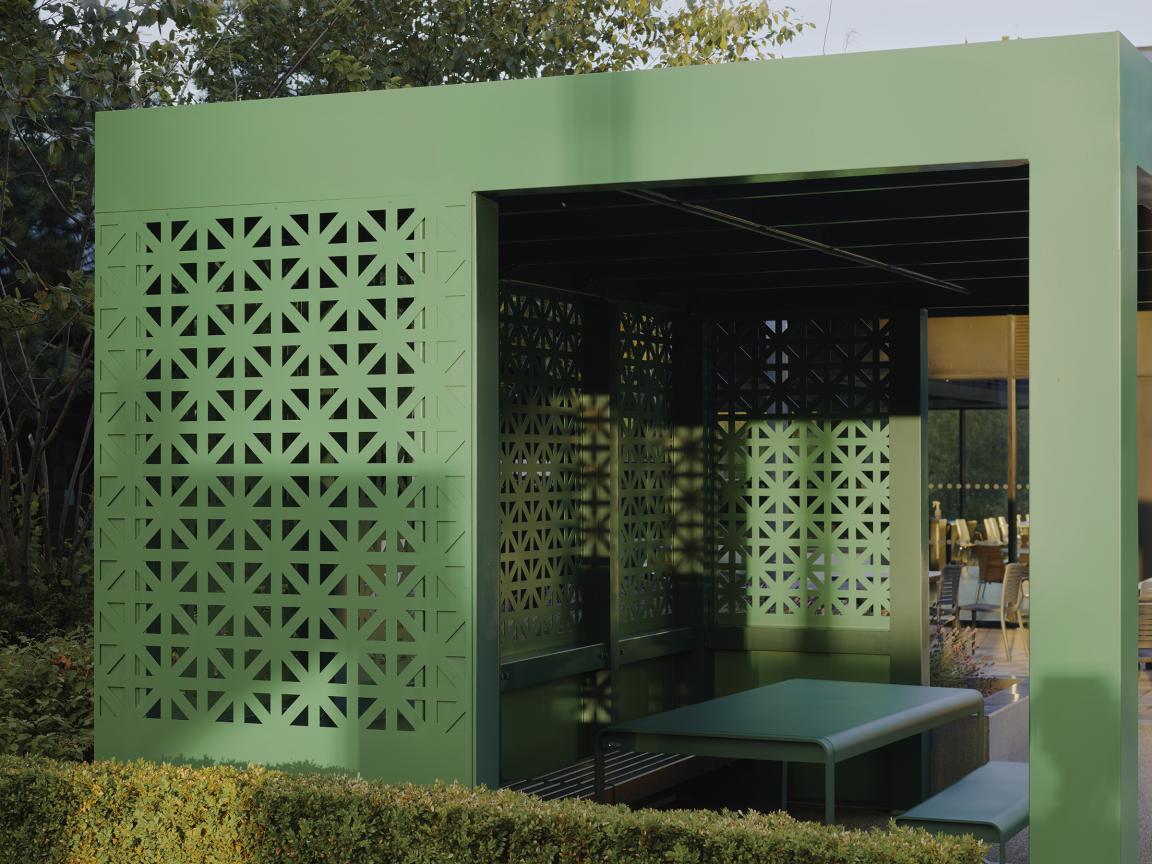
Credit: Gunner Gu

Credit: Gunner Gu
Sustainability Impact
A key advantage of the totem redesign lies in its adaptability. By painting each face a different colour, maintenance can be carried out in small, precise interventions, rather than a wholesale recoating of all the structures. This shift transforms upkeep into an economical, low-impact process, extending the lifespan of the totems while keeping them fresh, current and responsive to change. Like the city, the businesses and the people who use it, the installation can continually evolve, remain relevant and, ultimately, reduce design obsolescence.
Les Lang, director at Till Asset Management, said: “We are committed to maintaining Exchange Quay as the best office campus in Manchester. We do this by creating the best possible experience for our occupiers with a commitment to amenities and the best quality outside space. An exciting aesthetic and wayfinding are critical elements of that. We have a range of businesses on the site and many multinational corporations, with people working here from around Britain and across the world. The design updates have refreshed the campus and we are pleased with the result from both a visual and practical perspective.”

Credit: Gunner Gu

Credit: Gunner Gu

Credit: Gunner Gu

Credit: Gunner Gu



